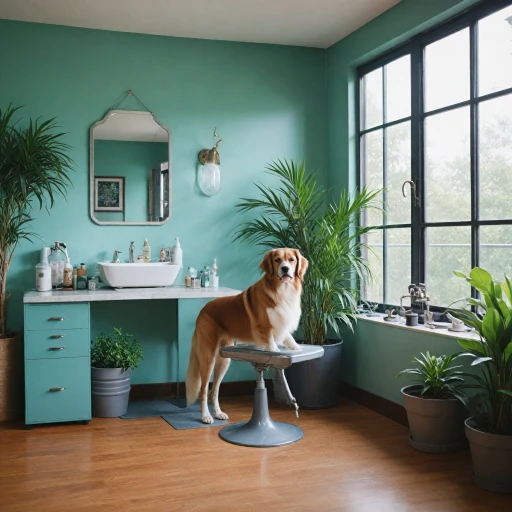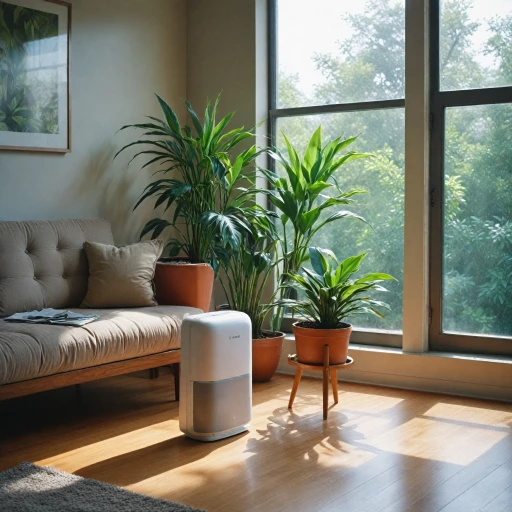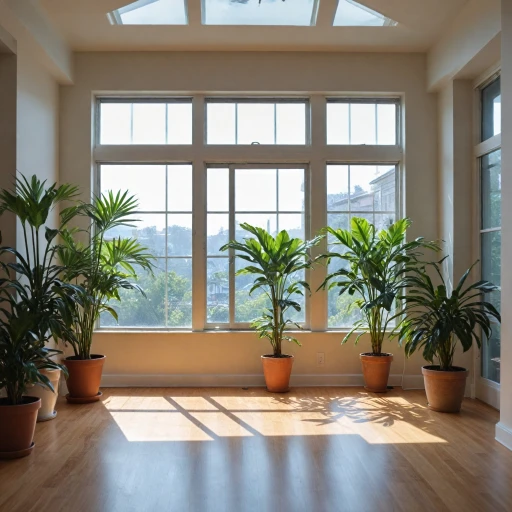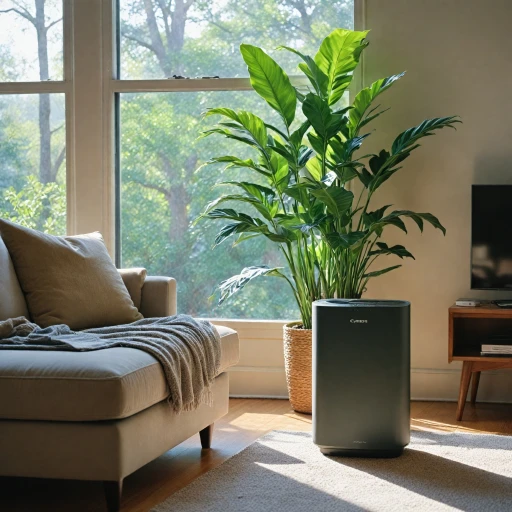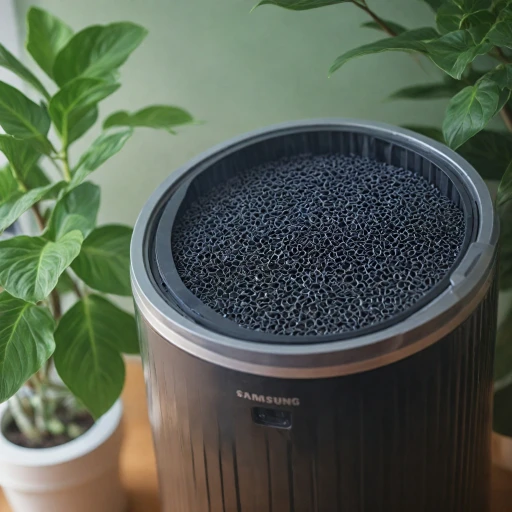How Activated Carbon Filters Work
Mechanism of Activated Carbon Filters
Activated carbon filters play a pivotal role in enhancing the efficiency of air purifiers by trapping contaminants. The process starts with the carbon being "activated" through heat, creating numerous small pores that greatly increase its surface area. This structure is ideal for capturing volatile organic compounds (VOCs), odors, and smoke particles. Simply put, as air flows through these filters, impurities are adsorbed, resulting in cleaner air. Additionally, when used in conjunction with a HEPA filter, such as in models like the Coway Airmega or Allerair Airmedic, the air purification process is further optimized. The combination of these technologies ensures a comprehensive capture of both large and microscopic particles, providing a significant improvement in air quality. For those considering the investment, activated carbon filters are known for their ability to effectively target smoke, odors, and gases, complementing the particle filtration done by the HEPA filter. This is especially beneficial in urban environments and for individuals with high sensitivity to odors or chemical pollutants. To enhance your understanding of charcoal filters' benefits in air purifiers, consider exploring this relevant SEO anchor.Advantages Over Other Filtration Methods
While HEPA filters alone are excellent for removing dust and allergens, they may not address gases or odors. This is where the activated carbon filter shines. Leveraging its porosity, the filter is particularly effective at adsorbing airborne chemicals and VOCs—common components in household products and building materials. In contrast to ionizers or other electronic air purifiers, activated carbon ensures that no ozone is generated, maintaining a safe indoor environment. Therefore, when seeking an air purifier on platforms like Amazon, whether it’s a portable option or a larger unit, opting for one with an integrated activated carbon filter could be a crucial factor to consider in terms of air quality and health benefits.Comparing Air Purifier Technologies
Exploring Modern Air Purifying Technologies
When it comes to selecting the best air purifiers for your home or office, understanding the different air purifier technologies is crucial. Each technology has unique features and benefits, making some more suitable for certain environments than others. In this section, we'll delve into the popular technologies in the market, including HEPA filters, activated carbon filters, and more.
HEPA Filters: A Benchmark for Air Purification
High-Efficiency Particulate Air (HEPA) filters are often the gold standard for air purifiers. They are renowned for capturing particles as small as 0.3 microns with an impressive efficiency of 99.97%. This makes them ideal for removing allergens, pollen, and even certain types of smoke from the air. HEPA filters, like those in the Coway Airmega and Pure Max models, are reliable choices for maintaining excellent air quality.
Activated Carbon Filters: Tackling Odors and VOCs
Activated carbon filters are particularly effective at removing volatile organic compounds (VOCs), odors, and smoke. When air passes through the activated carbon filter, contaminants are trapped, leaving the air cleaner and fresher. To learn more about how these filters work in air purifiers, you can explore this in-depth article.
Combination Filters: The Best of Both Worlds
Many modern air purifiers, like the Blue Pure and Allerair Airmedic brands, use a combination of HEPA and activated carbon filters for comprehensive air cleaning. This dual-action approach helps tackle a broad range of pollutants, providing optimal indoor air quality, especially in rooms that require higher levels of filtration.
Specialized Filters and Technologies
Beyond the standard technologies, some models like the Airmedic Pro offer advanced filtration systems, including medical-grade filters and true HEPA filters that target specific contaminants. These are perfect for spaces where air quality standards are critical, such as medical facilities or areas with high environmental pollution.
Choosing the right air purifier ultimately depends on your specific needs and environment. Consider factors such as the size of the room, your budget, and the type of pollutants you're dealing with. With options ranging from budget-friendly box filters to high-end models with a year warranty and free shipping on Amazon, there's a purifier out there for everyone. Once you identify the right technology for your situation, achieving clean air becomes an attainable goal.
Choosing the Right Air Purifier for Your Needs
Identifying Your Air Needs
When choosing an air purifier, it's essential to assess your specific needs. Are you primarily interested in removing allergens, VOCs, or smoke? Understanding your priorities helps you select the most appropriate filter type.
Evaluate Filtration Technologies
The market offers a variety of air purifier technologies. HEPA filters are known for effectively trapping small particles such as pollen, dust, and pet dander. For chemical gases and odors, an activated carbon filter is your best bet. It's crucial to evaluate what each technology, such as carbon-based purifiers, can offer and how it fits your needs.
Room Size and Air Purifier Capacity
Consider the size of the room where the air purifier will be placed. Devices are rated based on the square footage they can effectively clean. A small room might benefit from a compact model like the Blue Pure, while larger spaces may require a robust unit like the Coway Airmega.
Budget and Long-term Costs
While the initial price of an air purifier is important, also factor in the cost of replacement filters. Models with medical-grade true HEPA filters or activated carbon filters might have higher maintenance costs, but they often offer superior performance. Some units, like the airmedic pro, come with year warranties, ensuring long-term reliability.
Customer Ratings and Warranty
Customer reviews on platforms like Amazon can provide insight into the performance and reliability of a purifier. Look for units with high stars ratings and positive feedback regarding air quality improvements. Additionally, choose products offering free shipping and robust warranties for added peace of mind.
Brand Reputation and Product Quality
Brands like Coway, known for quality, offer air purifiers with both HEPA and activated carbon filters. A well-regarded brand increases trust in the product's efficiency and durability. Reading professional reviews and guides can help ensure you're making a knowledgeable decision.
Choosing a well-suited air purifier ultimately hinges on understanding your environmental needs, assessing varied filtration technologies, and weighing your budget constraints. This approach ensures you make a choice that delivers clean air and peace of mind effectively. For further insights into the benefits of HEPA air scrubbers, exploring reliable resources is recommended.
Maintaining Your Air Purifier
Essential Maintenance Practices for Optimal Performance
Maintaining your air purifier is crucial to ensure it works efficiently and lasts longer. Regular upkeep will not only help in maintaining the quality of air filtration but also helps prevent unexpected breakdowns and costly repairs.- Regular Filter Replacement: One of the key aspects of maintaining an air purifier is timely replacement of filters. This includes activated carbon filters, HEPA filters, and any other specialized filters your unit might have. For most units, such as the Allerair AirMedic or Coway Airmega, manufacturers recommend replacing filters every 6-12 months, depending on usage and air quality. Keep an eye on “filter replacement” indicators, often seen in models like the Coway Airmega or Blue Pure.
- Cleaning the Unit: Dust and dirt can accumulate on the exterior and inlets of your air purifier. Periodically, wipe down the surface and use a vacuum cleaner to gently clean the vents. For some models, such as the medical grade Airmedic Pro, this may also include the interior components if accessible and safe to do so.
- Monitor Air Quality: Many modern air purifiers come with sensors that monitor the air quality and adjust settings accordingly. It’s advisable to make sure they are not blocked or obstructed. This helps the purifier operate effectively across its full range of settings, whether dealing with smoke, VOCs, or dust.
- Placement of the Purifier: To maximize the clean air output, ensure that the air purifier is placed in a free area that isn’t blocked by other objects or furniture. Ensure the purifier can handle the room size; larger spaces may require units like the Pure Max or a higher capacity setting on the AirMega.
Health Benefits of Cleaner Air
Enhance Your Well-being with Cleaner Air
Breathing in cleaner air can substantially contribute to your overall health and well-being. Utilizing the right air purifiers, such as those equipped with activated carbon and HEPA filters, can offer you numerous health benefits.
First and foremost, these purifiers are highly effective in reducing Volatile Organic Compounds (VOCs), tobacco smoke, and other harmful particles present in your home environment. Tackling contaminants ensures that you and your family breathe air that supports better respiratory health.
Installing a medical-grade purifier, such as the Coway Airmega or the Blue Pure, can enhance air quality by capturing even smaller particles that can lead to chronic illnesses. Given the option of free shipping on platforms like Amazon, ensuring clean air doesn't have to break the bank.
- Mitigates Allergens: An activated carbon filter effectively traps allergens such as pet dander, mold spores, and dust mites.
- Improves Sleep Quality: Cleaner air reduces irritants that might disturb your sleep, allowing for more restful nights.
- Reduces Odors: Noticeably lessens odors from cooking or smoking, providing a fresher atmosphere in your living space.
- Lifetime Improvements: While an air purifier’s price varies, brands often offer economical deals, especially on Amazon, with options like a five-year warranty or free replacement filters.
Don't forget about proper maintenance! Keep tabs on your purifier’s highest setting and change filters, like carbon and HEPA, as recommended to maintain optimal performance. Remember, achieving quality air within your home isn’t just about comfort—it's about advancing your health in an efficient and cost-effective manner.
Addressing Common Concerns and Misconceptions
Addressing Common Misunderstandings About Air Purifiers
When considering an air purifier, it is crucial to tackle some common concerns and misconceptions that might arise. Understanding these will aid in making an informed choice for cleaner air within your living or working space.- Effectiveness of Filters: A prevalent misconception is that all air purifiers are alike. While activated carbon filters excel in removing odors and volatile organic compounds (VOCs), HEPA filters are indispensable for capturing smaller particles like allergens and smoke. For optimal air quality, consider models that combine both technologies, such as the Coway Airmega or Allerair Airmedic models.
- Noise Levels: There is a perception that purifiers, especially at the highest setting, might be too noisy. However, many modern air purifier models are designed to operate quietly. If noise is a concern, look for purifiers explicitly marketed as having low sound output.
- Maintenance Requirements: Maintaining your purifier is critical for long-term performance. Concerns about frequent filter replacements are common; however, many brands offer cost-effective replacement filters and provide warranties (often up to a year) ensuring durability and less frequent replacements.
- Costs and Shipping: Some might hesitate due to the perceived cost. While premium models might have higher price points, there are varied options available on platforms like Amazon that offer free shipping and competitive pricing, without compromising quality.
- Room Suitability: It’s a myth that one size fits all. It's essential to choose an air purifier based on the specific room size for effective filtration, whether it’s a small box room or a larger space. Check the specified room coverage before purchasing.

